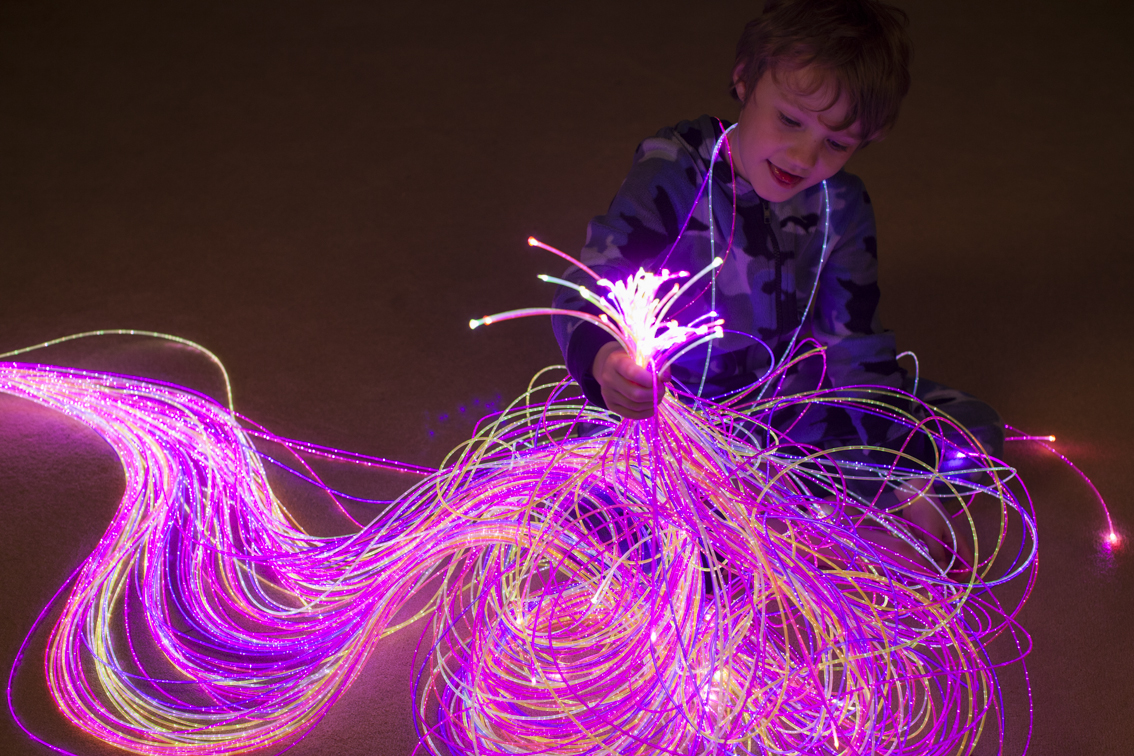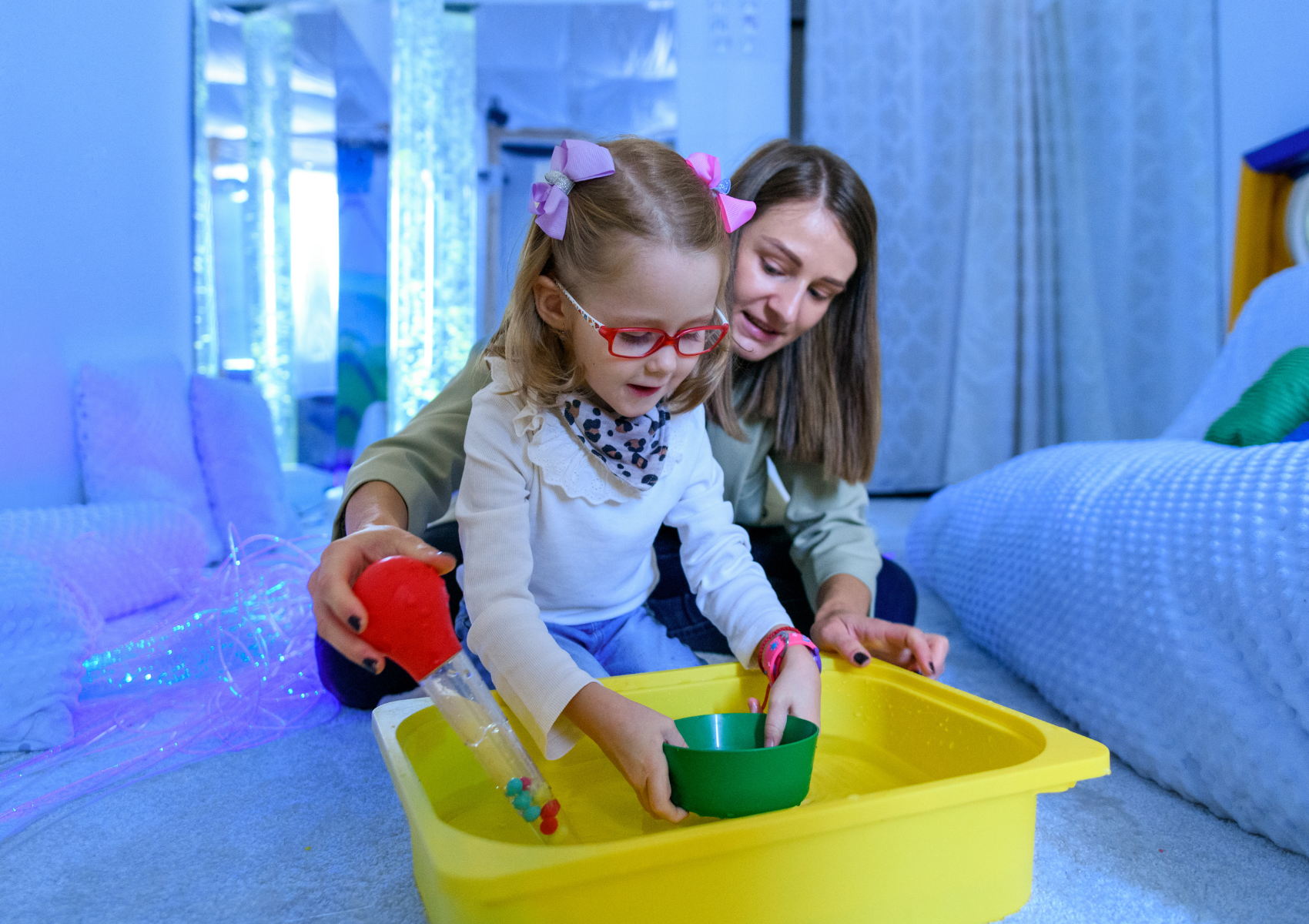Sensory rooms have gained widespread recognition for their positive impacts on individuals with sensory processing challenges, such as those with autism, ADHD, or other sensory disorders. These purposefully designed spaces provide a controlled environment where individuals can engage and explore their senses in a safe and comforting way in otherwise uncomfortable or unfamiliar environments. In this article, we'll discuss sensory room benefits and the essential elements that make them effective.
A sensory room is a specially designed space that caters to individuals with sensory processing difficulties. These rooms are equipped with a variety of tools and stimuli to engage different senses, including sight, sound, touch, and movement. The goal is to create a controlled and calming environment that helps individuals regulate their sensory experiences and manage sensory overload.
Here are a few of the benefits that sensory rooms provide:
-
Sensory Regulation: Sensory rooms act as a cocoon of comfort, providing a structured environment where individuals can regulate and organize their sensory input. This is particularly crucial for those with sensory processing disorders, as it empowers them to manage and adapt to various stimuli effectively.
-
Stress Reduction: The calming ambiance of sensory rooms serves as a potent antidote to stress and anxiety. The carefully chosen elements, from soft lighting to soothing sounds, work in harmony to create an atmosphere that promotes relaxation, allowing individuals to find respite from the demands of the outside world.
-
Enhanced Focus and Attention: For individuals with conditions like ADHD, sensory rooms offer a refuge where they can redirect excess energy and enhance focus. The controlled sensory activities provided in these spaces help channel attention positively, fostering an environment conducive to improved concentration.
-
Improved Motor Skills: Sensory rooms often incorporate equipment and activities that promote gross and fine motor skill development. Swinging, climbing, and manipulating tactile materials not only engage the senses but also contribute to enhanced coordination and motor planning.
-
Social Interaction: Beyond individual benefits, sensory rooms can serve as inclusive spaces that encourage social interaction. By providing a comfortable environment, these rooms become platforms for individuals to engage with peers or caregivers, fostering meaningful social connections.
-
Cognitive Development: The rich sensory experiences offered in these rooms contribute to cognitive development. Visual stimuli, such as captivating light displays, and interactive activities challenge the mind, promoting cognitive growth and exploration.
-
Emotional Well-Being: Sensory rooms play a pivotal role in supporting emotional well-being. By providing a controlled environment where individuals can explore and express their emotions without judgment, these spaces contribute to a positive emotional state.
-
Self-Expression and Autonomy: Personalization is a key aspect of sensory rooms, allowing users to choose activities or stimuli based on their preferences and needs. This element of autonomy fosters a sense of control and self-expression, empowering individuals to navigate their sensory experiences on their terms.

These spaces, designed with care, offer a safe haven for individuals with unique sensory needs. As we cover our favorite sensory room must-haves, we aim to create more than a functional space. Each chosen element becomes a building block for a sanctuary, providing comfort and a space where individuals can authentically engage with their surroundings, finding solace within their sensory experiences.
Here are a few of our must-haves for an effective sensory room:
-
Soft Lighting: Soft, adjustable lighting helps create a calming atmosphere. Avoid harsh, fluorescent lights that can be overstimulating.
-
Comfortable Seating: Provide a variety of comfortable seating options, such as bean bags, Deep Pressure Squeeze Seats, Howdahug Sensory Seats, or our Sensory Canoe to accommodate different preferences.
-
Tactile Materials: Incorporate a range of tactile materials, such as textured fabrics, soft weighted blankets/lap pads, and vibrating sensory cushions. These elements offer individuals the opportunity to explore different textures and promote tactile stimulation.
-
Visual Stimuli: Use visually engaging elements, such as sensory gel timers, fiber optic lights, or projection systems, to provide visual stimulation while maintaining a serene atmosphere.
-
Auditory Tools: Include auditory stimuli like soft music, nature sounds, or white noise machines to offer a calming auditory experience. Sensory earmuffs can be provided for individuals who prefer more personalized auditory input.
-
Swings and Movement Equipment: Swings, hammocks, and other movement equipment contribute to vestibular stimulation, promoting balance and coordination.
- Texture Exploration Bins: Sensory bins filled with various textured materials for tactile experiences. You can either buy pre-assembled sensory bins or create your own for a more custom experience
-
Noise Dampening Room Tiles: Ensure sound control with noise-dampening tiles for a serene environment.
- Aromatherapy Station: Introduce calming scents to enhance the sensory experience within the room using Essential Oils or All Natural Essential Oil Sprays.
-
Personalization: Tailor the sensory room to individual preferences by allowing users to choose activities or stimuli based on their needs. This promotes a sense of autonomy and control.
Sensory rooms play a crucial role in providing individuals with sensory processing challenges a supportive and therapeutic environment. By incorporating these must-haves, sensory rooms can effectively contribute to sensory regulation, stress reduction, and overall well-being. The customization of these spaces allows for a personalized approach, making them versatile and adaptable to the diverse needs of those who benefit from them.
©2023 Therapy Shoppe® Incorporated. All rights reserved.
More articles you might enjoy:
The Benefits of Weighted Blankets for Kids with Special Needs and Safe Usage Tips
Simple Calming Deep Pressure Activities You Can Do At Home

